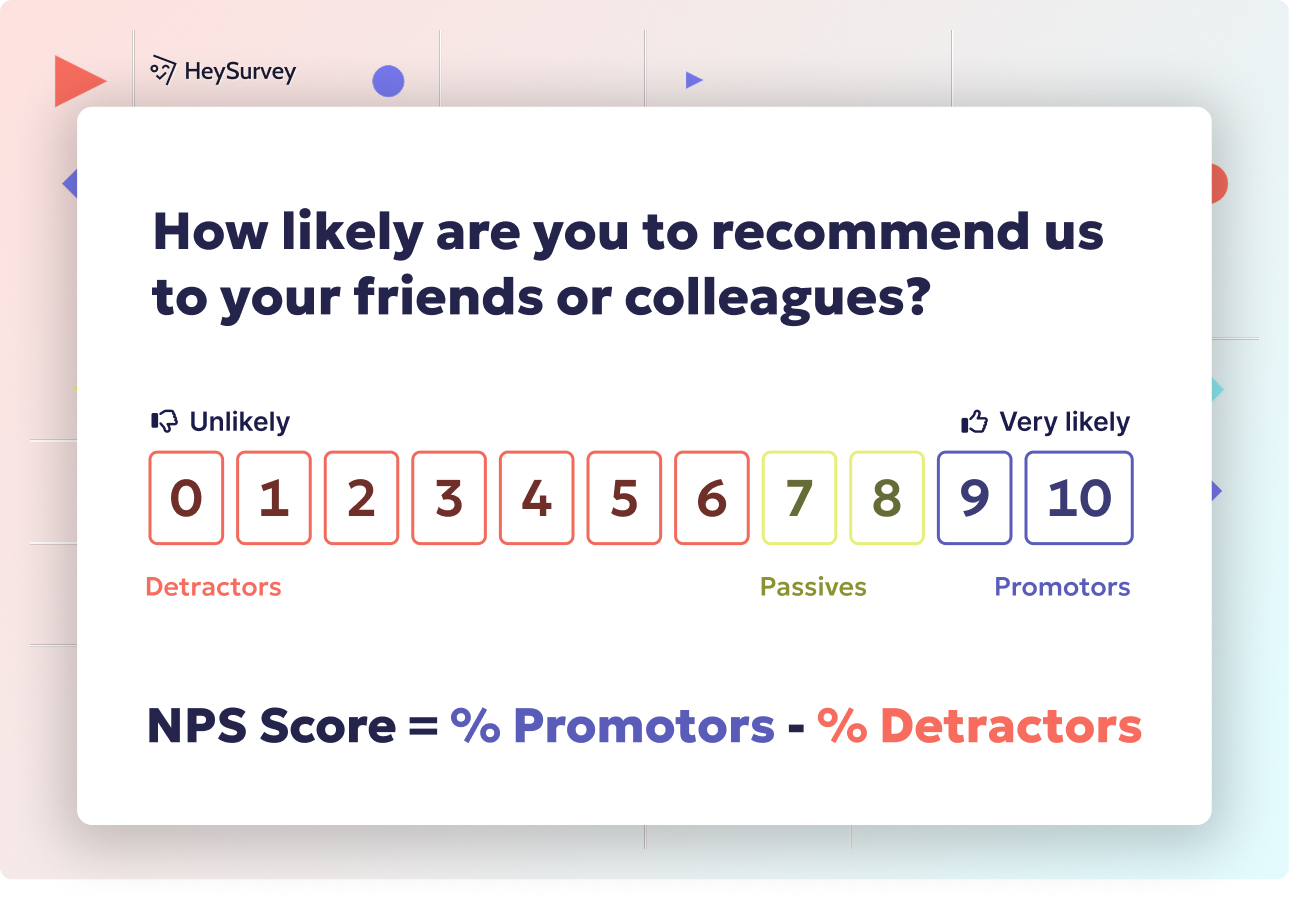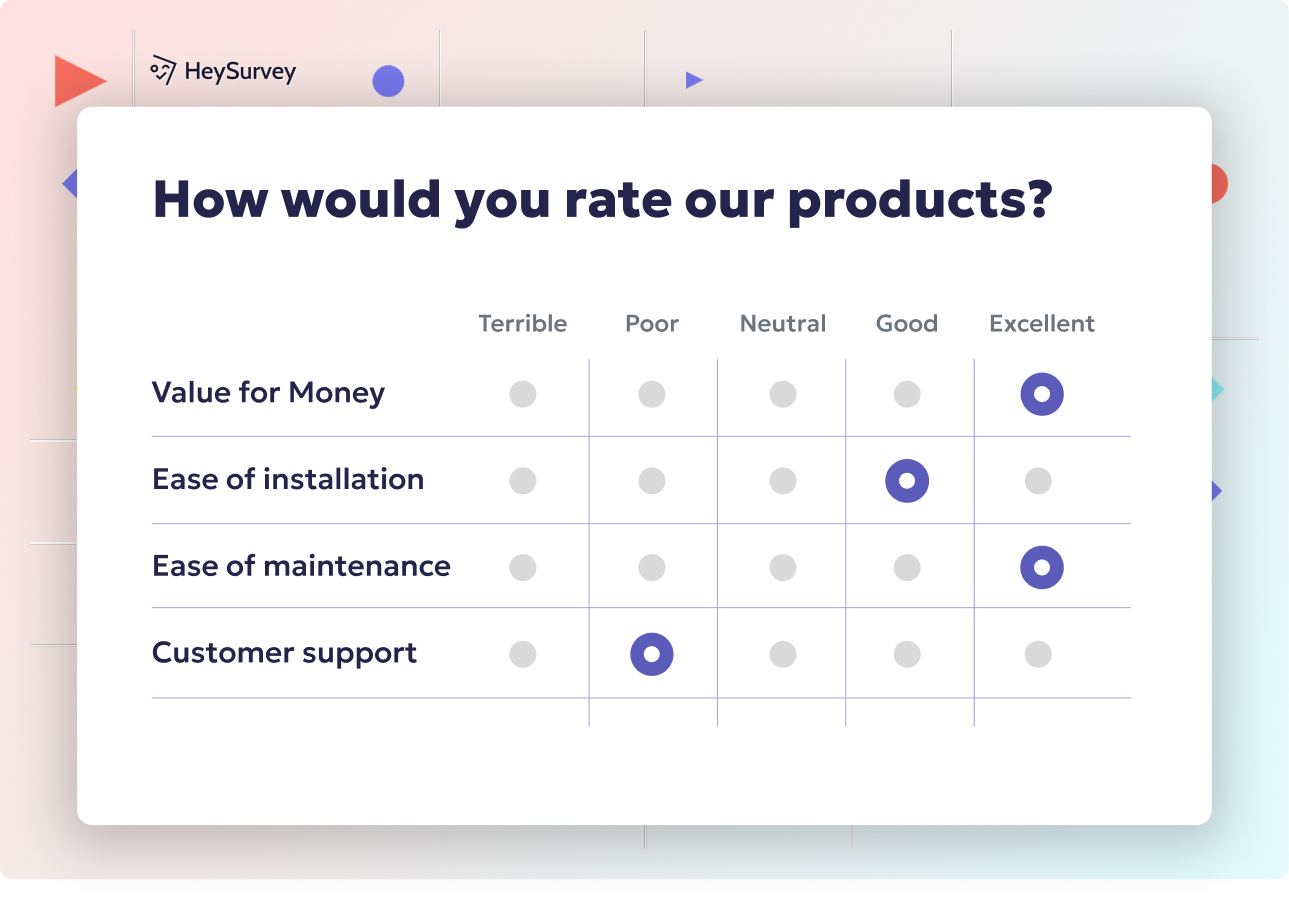31 Remote Work Survey Questions to Boost Engagement & Success
Explore 40 remote work survey questions with 40+ sample queries to boost engagement, productivity, and teamwork in hybrid and remote teams.
The world of work has changed—drastically! Suddenly, pajamas and Zoom calls outnumber watercooler chats. Hybrid and remote models are here to stay, with around 60% of companies adopting some version of flexible work by 2024. But making remote work “work” means more than sending a laptop home—it means listening. Data-driven survey questions are the best way to know what’s working, what isn’t, and how employees really feel. In this lively guide, we'll walk through eight types of remote work survey questions (each with a unique mission) and sprinkle in expert tips for getting answers you can trust—and actually use.
Employee Engagement Survey Questions
Why & When to Use
Employee engagement is the heartbeat of any workplace, whether it’s at HQ or in hundreds of home offices. Organizations deploy these questions after project wrap-ups, quarterly reviews, or anytime leadership spots a dip in participation or employee Net Promoter Scores (eNPS). When energy sags, engagement questions uncover hidden frustrations—and golden opportunities.
You’ll want to use them whenever you notice:
- Declining attendance at meetings
- Fewer voices chiming in on new initiatives
- Slack channels going suspiciously quiet
These surveys are especially valuable right after significant company milestones, as they gauge how recent changes are landing with the team. By asking, you learn what truly powers morale, motivation, and that all-important “extra mile.”
And don’t forget: well-timed engagement check-ins allow for nimble course-corrections before tiny issues balloon into big resignations. Employees who feel heard are more likely to stay—and to sparkle.
5 Sample Questions
How connected do you feel to our company’s mission when working remotely?
What factors most influence your enthusiasm to go the extra mile while working from home?
On a scale of 1–10, how valued do you feel by your immediate team?
Which recent remote initiatives, if any, have boosted your engagement?
If you were the CEO for a day, what one change would you make to improve engagement for remote staff?
A Gallup survey found that only 28% of exclusively remote employees strongly agree they feel connected to their organization’s mission and purpose, tying the record low for this group from 2011. (gallup.com)
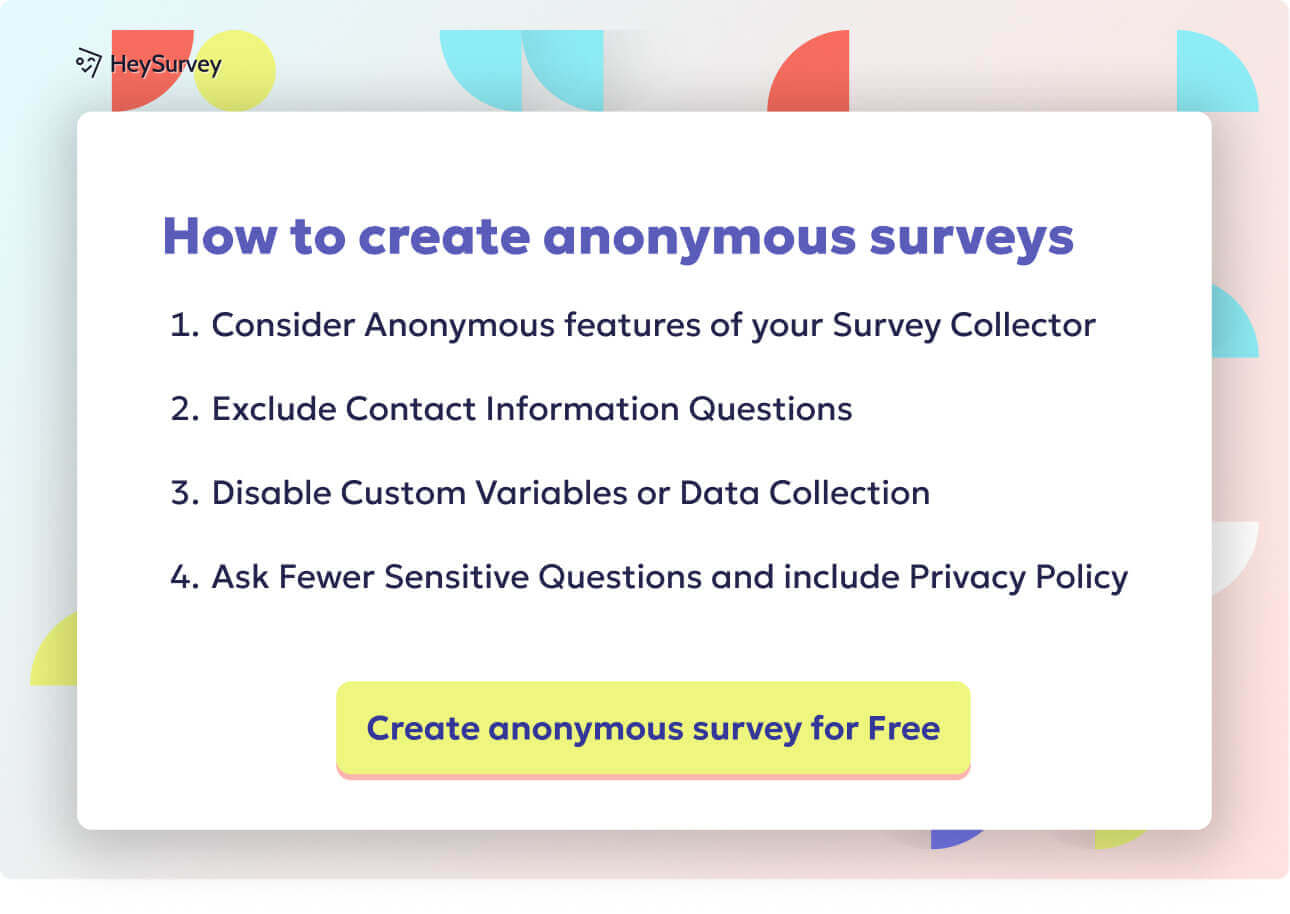
Creating your remote work survey with HeySurvey is a breeze! Just follow these 3 easy steps, and you’ll be gathering insights before you know it. Ready for a shortcut? Click the button below to open a suitable template and jump right in!
Step 1: Create a New Survey
Start by logging into HeySurvey or simply visiting the site if you want to try without an account (you’ll need one to publish and collect responses). From the dashboard or homepage:
- Click “Create new survey”
- Choose between an Empty Sheet to build from scratch or pick a Pre-built Template that matches your remote work survey needs. Selecting a template speeds things up since questions are already organized.
- Give your survey an internal name so you can find it easily later (don't worry, respondents won’t see this).
Now you’re in the Survey Editor, ready to make the magic happen!
Step 2: Add Questions
This is where you customize your survey questions to suit your goals. Here’s what to do inside the Survey Editor:
- Click the “Add Question” button at the top or between existing questions.
- Pick question types from the menu—Likert scales, multiple choice, text input, and more. You can mix and match to keep it engaging and gather the richest insights.
- Type your question text exactly as you’d like respondents to see it. Add descriptions or instructions if needed to clarify.
- Mark important questions as required so participants can’t skip them.
- Consider adding images or fun GIFs to make things less boring!
- Use branching if you want to guide respondents down different paths based on their answers, making your survey smarter and more personalized.
When ready, preview your survey to check the flow and design.
Step 3: Publish Your Survey
Once your questions look perfect, it’s showtime:
- Click the “Publish” button in the Survey Editor.
- If you don’t yet have an account, HeySurvey will ask you to create one—this is necessary so you can track responses and manage your surveys.
- After publishing, you’ll get a shareable link to send to your team or embed wherever you like.
- Share away and start collecting data instantly!
Bonus Steps for Extra Flair
- Apply Your Branding: Upload your company logo and adjust colors and fonts in the Designer Sidebar. This makes the survey feel like “you” and builds trust with respondents.
- Define Settings: Set start/end dates, response limits, or add a redirect URL for when participants finish the survey—all from the Settings Panel.
- Skip into Branches: Use branching logic to tailor follow-up questions depending on answers, so everyone gets a relevant, engaging experience without unnecessary fluff.
That’s it! From start to finish, HeySurvey makes remote work surveys intuitive and fun—even if you’ve never made a survey before. Ready to dive in? Hit the button below to open a remote work survey template and get started!
Communication & Collaboration Survey Questions
Why & When to Use
Communication and collaboration are the glue holding remote teams together, but sometimes that glue gets a little…fuzzy. Survey questions in this category are perfect for surfacing the sneaky problems that slow things down. Think recurring scheduling snafus, misused tools, or message-overload across platforms.
When should you ask? Right after:
- New tool launches (hello, Slack/Teams upgrades!)
- Midway through cross-team projects
- A cluster of missed deadlines turns up
By targeting these moments, you zero in on whether people are swimming smoothly or sinking in digital quicksand. These insights drive smarter workflows, clearer guidelines, and better teamwork—no matter the timezone.
The best part? Asking the right questions often reveals solutions no one expected. You may discover, for instance, that a weekly “virtual coffee” improves idea-sharing more than any app.
5 Sample Questions
How effective are our current communication channels for your day-to-day work?
Which time-zones or scheduling conflicts most hinder collaboration?
How comfortable are you sharing ideas in virtual meetings compared to in-person?
Rate the clarity of responsibilities within cross-functional remote teams.
What additional resources would help streamline collaboration?
Remote work leads to more siloed collaboration networks, reducing cross-group communication by about 25%. (vcresearch.berkeley.edu)
Productivity & Performance Survey Questions
Why & When to Use
Productivity and performance are the holy grail for remote leaders hungry for proof. But here’s the secret: output in pajamas isn’t always apples-to-apples with output in slacks. These surveys help you understand how remote workers self-rate, what helps or hinders them, and how KPIs should actually look offsite.
Perfect for use:
- Every quarter to benchmark trends over time
- Whenever you launch a new Objectives and Key Results (OKR) framework
- When managers spot a mismatch between perceived and actual output
This approach paints a clearer picture of the real state of play—not just what’s logged in Asana. It can also highlight when office benchmarks are unrealistic for remote contexts.
Best of all, well-crafted questions reveal the secret sauce of high performers as well as the stumbling blocks of their peers, guiding smarter goal-setting for everyone.
5 Sample Questions
How would you compare your current productivity to your in-office productivity?
What time of day do you feel most productive when working remotely?
Which distractions most impact your output at home?
Rate the clarity of performance expectations in a remote context.
Which metric(s) best reflect your success while working remotely?
Tools & Technology Satisfaction Survey Questions
Why & When to Use
Tools and technology are the lifeblood of remote work, but even the flashiest app is useless if it crashes twice a day. This survey type audits what’s working, what’s not, and where investment pays off most. Connections, keyboards, video cams—all can sabotage or supercharge your team.
When to deploy:
- After rolling out new platforms or tools
- When IT ticket volume is suddenly spiking
- When feedback about laggy software hits an all-time high
Asking about tech pain points helps you prioritize budgets, prevent downtime, and keep everyone humming along. Employees are also more likely to flag issues before they become business-critical.
Plus, these questions help find hidden training needs. Sometimes the tool isn’t the problem—it’s just being used upside down.
5 Sample Questions
How satisfied are you with the reliability of your remote work equipment?
Which tool(s) slow you down the most, and why?
Rate the quality of IT support you receive remotely.
How intuitive do you find our VPN or security protocols?
What technology investment would most improve your productivity?
A survey revealed that 76% of remote workers are not fully satisfied with their IT support experiences. (techsee.com)
Management & Support Survey Questions
Why & When to Use
Remote setups can expose gaps in management and support faster than you can say “Wi-Fi dropout.” These surveys check whether leaders are accessible, decisions feel transparent, and feedback reaches those who need it.
Best used:
- Right after leadership shake-ups
- During annual review cycles
- When rumors or confusion surface among remote teams
These questions matter because distance can magnify both good and bad management. Employees need to know their questions won’t fall into a black hole—and that feedback (the real kind!) shows up on schedule.
Crafting these questions right encourages staff to report not just what’s bad, but what works, letting leaders double down on the good stuff while fixing the rest.
5 Sample Questions
How accessible is your manager for ad-hoc questions while remote?
Do you receive constructive feedback frequently enough to excel?
Rate the transparency of decisions made by senior leadership.
How confident are you in the company’s remote work vision?
What could managers do differently to better support you?
Work-Life Balance & Well-Being Survey Questions
Why & When to Use
Work-life balance might seem easier in fuzzy slippers, but remote work can blur boundaries until they all but disappear. These surveys are powerful burnout detectors and secret weapons for mental health policies.
Reach for them:
- Twice a year, as part of your ongoing wellness program
- Any time workload surges put teams firmly in the “crunch” zone
- When whispers of burnout, stress, or overtime crop up
These questions pull back the curtain on how—and if—people truly unplug at the end of each workday. Honest answers drive measurable improvements, like better policies or extra wellness resources.
And most importantly, showing you care builds enormous goodwill—it’s the fastest path to retention in competitive talent markets.
5 Sample Questions
How easy is it for you to disconnect from work at day’s end?
Have you experienced burnout symptoms in the last three months?
How satisfied are you with our mental-health resources?
Rate your ability to take breaks during the workday.
What one policy change would most improve your well-being?
Remote Culture & Sense of Belonging Survey Questions
Why & When to Use
Culture and belonging don’t magically survive the jump to remote work—they need love (and a nudge) to endure. These questions check in on camaraderie, inclusion, and whether your company culture translates over Wi-Fi.
Send these out:
- After running virtual team-building marathons
- As follow-ups to diversity, equity, and inclusion (DEI) campaigns
- If you notice “us vs. them” vibes creeping into chat threads
When crafted with care, these questions help you pinpoint bright spots as well as problem areas in how people connect with each other and with the business.
Bonus: you might discover the quirky little rituals that really matter to your team—Friday meme-offs, anyone?
5 Sample Questions
How connected do you feel to your colleagues on a personal level?
Do virtual events help you feel part of the company culture? Why or why not?
Rate the inclusiveness of our remote workplace.
How openly can you express your ideas in remote settings?
What traditions or rituals could strengthen our remote culture?
Future Remote Work Preferences Survey Questions
Why & When to Use
Every forward-thinking company needs to forecast the future of work—and nobody knows what they want better than your employees. These survey questions assess appetite for remote vs. office days, flexibility, and potential moves.
Perfect timing:
- Each year, to spot trends and update policies
- Before changing your remote/hybrid model
- When planning space or infrastructure needs
The answers highlight what matters most—be it location flexibility, cool amenities, or relocation possibilities. That means smarter real estate spending, higher retention, and (ideally) no more unused ping-pong tables.
These surveys also help soothe nerves: big changes land better when staff know they’re being heard.
5 Sample Questions
What is your ideal split between remote and in-office work?
How likely are you to relocate if permanent remote work becomes an option?
Which on-site amenities would entice you back to the office more often?
How important is location flexibility to your long-term employment decision?
What concerns do you have about future remote policy changes?
Best Practices: Dos & Don’ts for Crafting Remote Work Surveys
Getting good data is half science, half art—and more than a little empathetic communication. Done right, remote work surveys are lean, engaging, and wildly informative. Follow these best practices to maximize both your response rate and your insights.
DO set a clear objective for each survey to avoid data overload.
DO keep surveys concise (≤10 minutes) to maintain high completion rates.
DO use a healthy mix of Likert, multiple-choice, and open-ended items for richer insights.
DON’T overlook anonymity—employees share more candid feedback when they feel safe.
DON’T launch surveys without communicating next steps; act quickly on findings to build trust.
DO benchmark results over time to track progress and ROI of remote initiatives.
Above all, remember: showing people that you’ll actually use their feedback is the #1 way to inspire honest answers!
Remote work isn’t just a trend; it's the new reality for millions. Crafting the right remote work survey questions lets you ride each wave of change with confidence—and keeps your people thriving, wherever they plug in. Surveys aren’t just about answers; they’re about connection, trust, and growth. Start listening, and you’ll be amazed at what your team will tell you.
Related Employee Survey Surveys

29 Essential Post Mortem Survey Questions for Project Success
Discover 25+ essential post mortem survey questions to improve projects, boost team morale, and d...
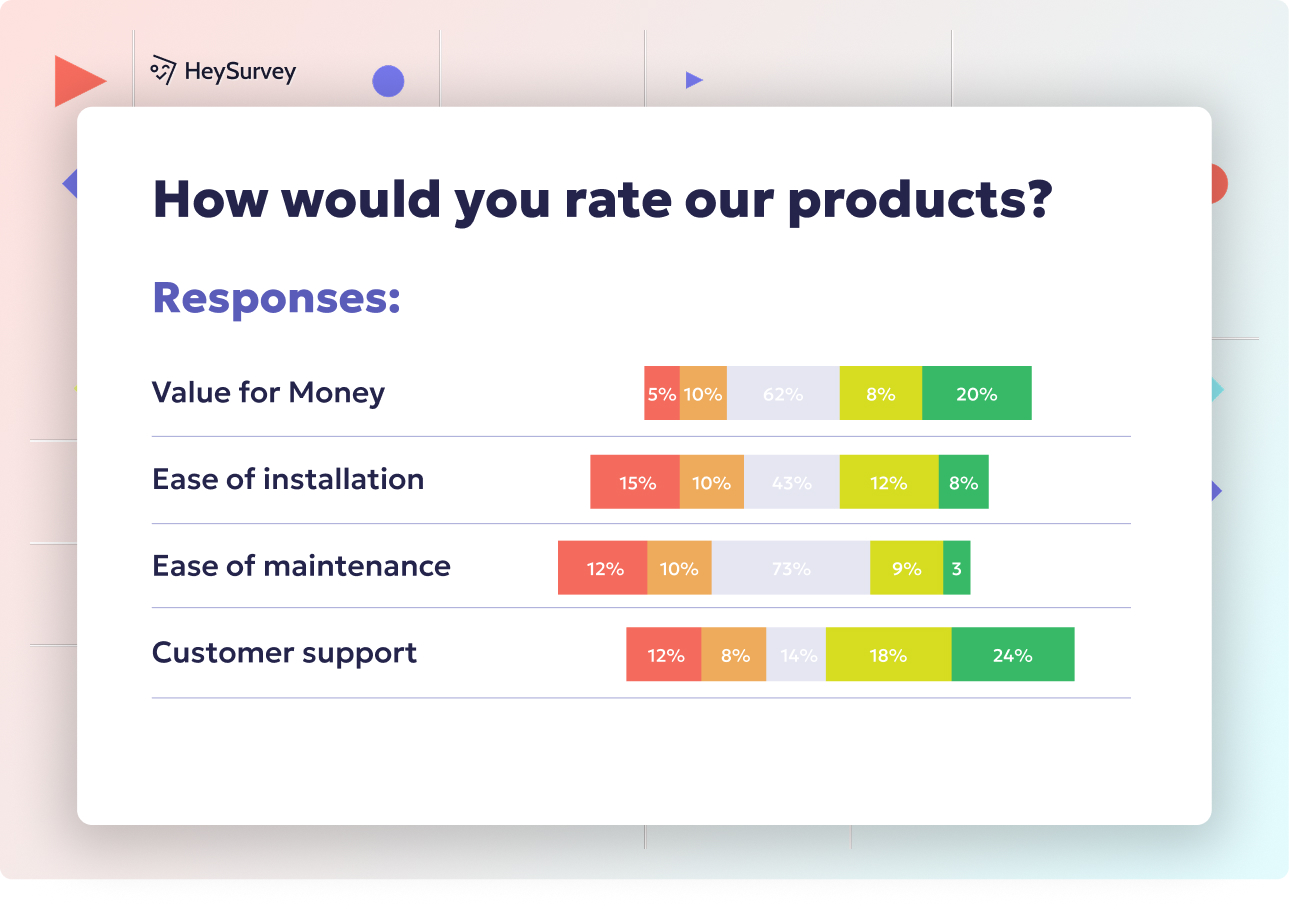
31 Change Readiness Survey Questions to Boost Your Success
Discover 25+ sample change readiness survey questions to assess attitudes, barriers, and confiden...
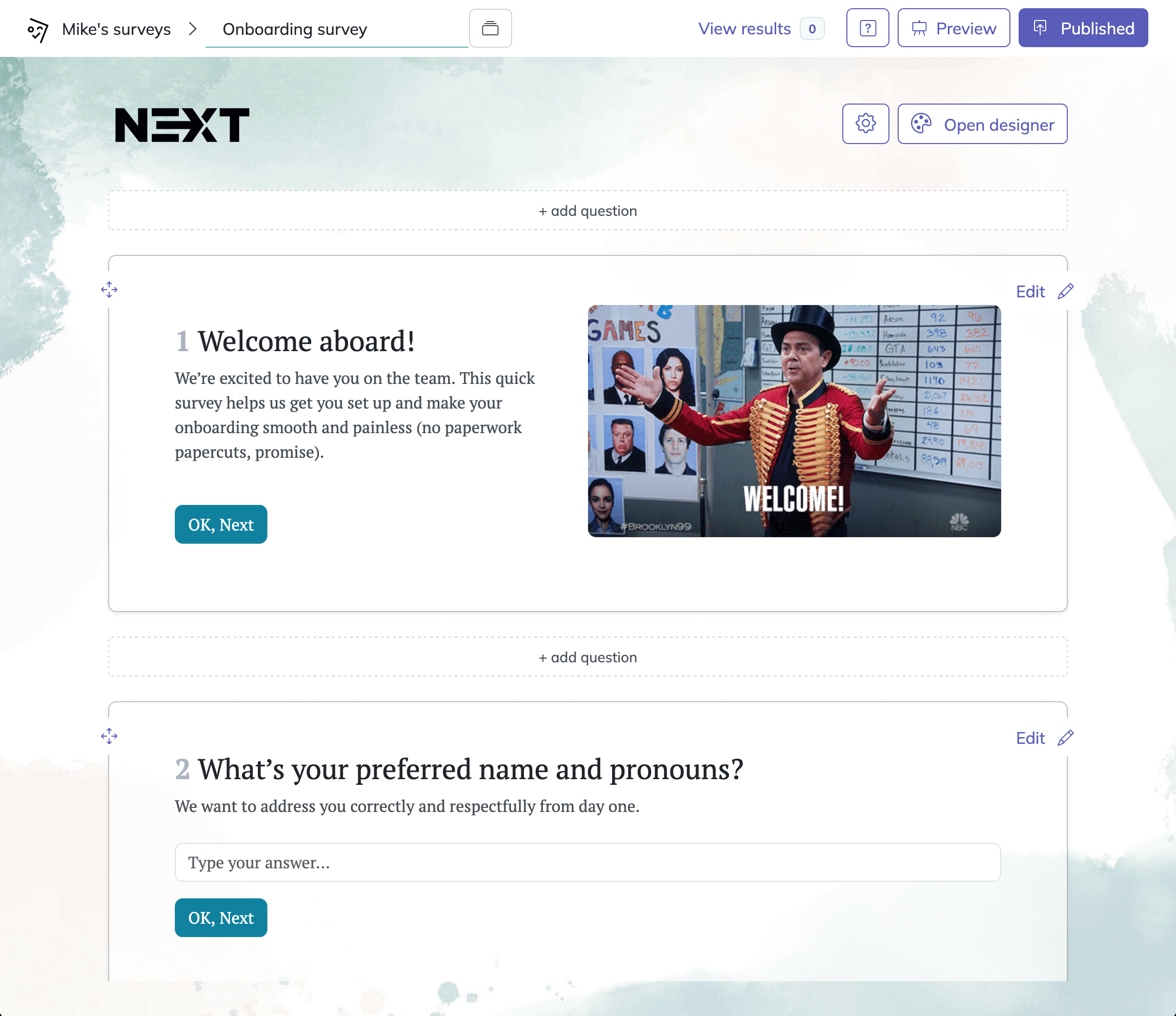
31 Retreat Survey Questions to Collect Actionable Feedback
Discover 26 essential retreat survey questions to gather actionable feedback before, during, and ...
